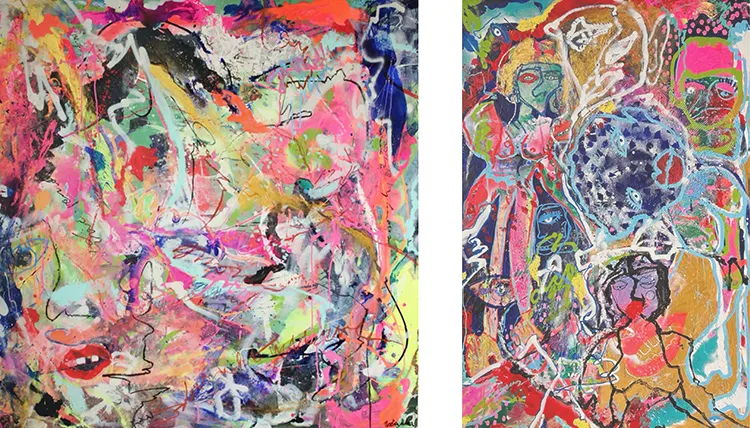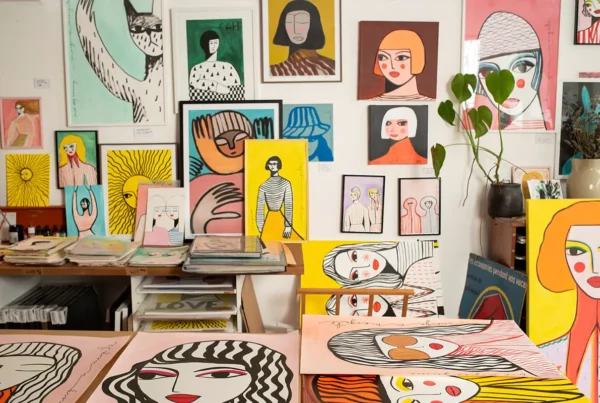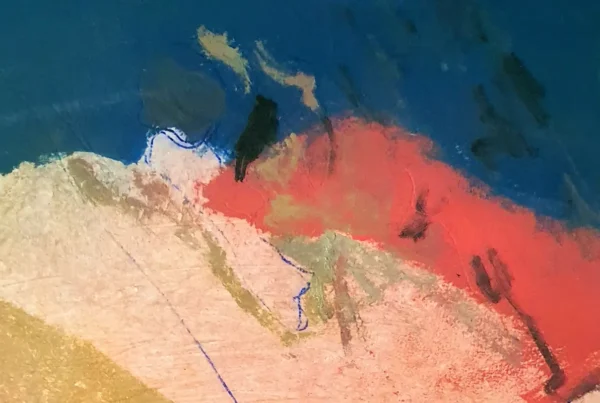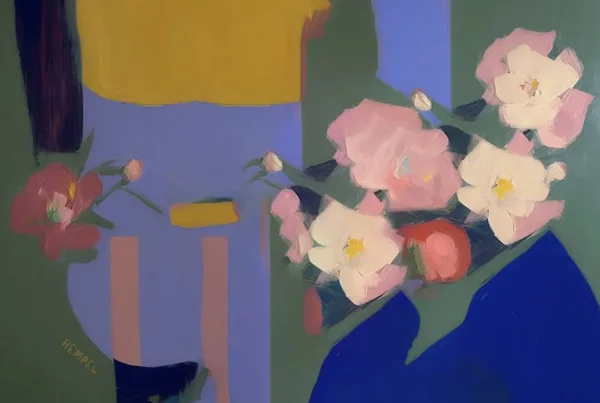“I let go of needing to ‘prove’ myself and started creating just for the sake of it, entering a flow state where my mind released its grip, and my heart could take over.”
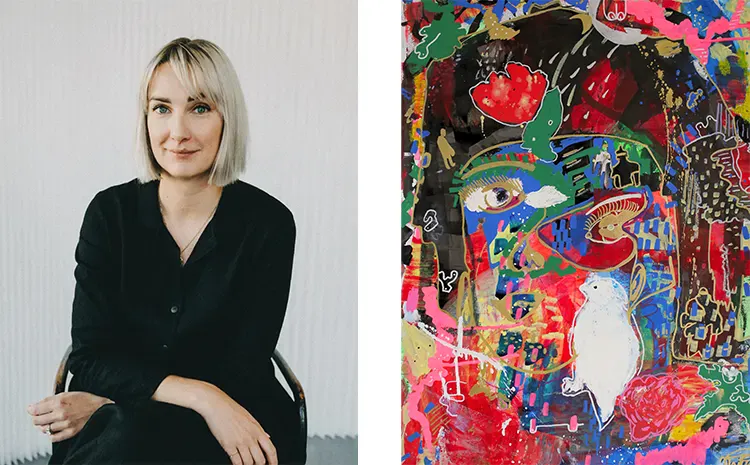
Nadia Aldea: Finding Identity Through Creative Exploration
Nadia Aldea’s relationship with creativity has been a constant presence throughout her life, though it took years for her to fully embrace herself as an artist. Her earliest memories of creation are rooted in the natural world—spending childhood days in her grandmother’s garden, tending to plants, and selling produce at the local farmer’s market. Though seemingly unrelated to painting, these experiences instilled in her a deep appreciation for color, texture, and the sensory richness of her surroundings. These formative years laid the foundation for her artistic instincts, though she did not yet recognize them as such.
Her journey toward fully embracing art was not marked by a singular moment but rather a gradual realization of what had always been an innate part of her. She wrestled with the question of what it truly meant to “become” an artist, wondering whether it was a title one had to earn or a natural extension of one’s being. The turning point came when she released the need for external validation, allowing herself to create without pressure or expectation. In doing so, she unlocked a space where art could flow freely, unrestricted by self-doubt or imposed definitions.
Throughout her life, Aldea has explored a wide range of creative outlets, from writing poetry and self-publishing books to photography and design. In 2021, she transitioned into digital art, and soon after, she immersed herself fully in mixed media painting. Each artistic medium she has engaged with reflects a different facet of her creative identity. However, it is within painting that she has found the most profound connection—a space where she can fully express the complexities of her emotions and the layers of her lived experience.
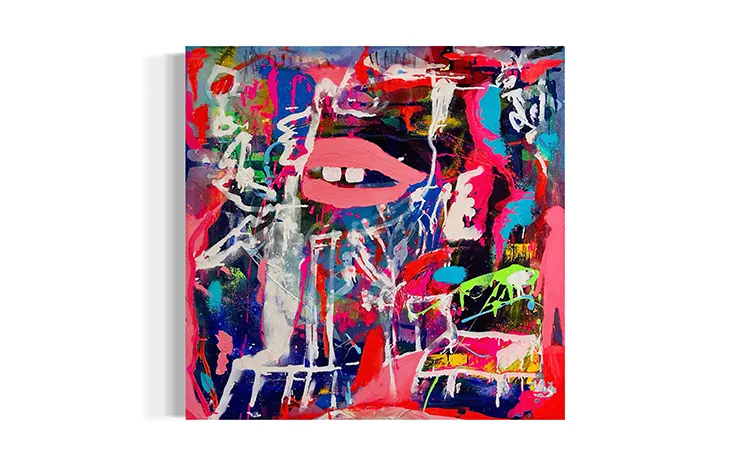
Emotion in Form: The Themes and Aesthetics of Her Work
The artistic style of Nadia Aldea is deeply intuitive, shaped by her neurodivergent perspective and her struggle with alexithymia, a condition that makes identifying and verbalizing emotions challenging. For her, painting is a means of translating unprocessed feelings into something tangible. While her work often stems from themes of trauma and identity, it is infused with vibrant colors and striking contrasts, creating pieces that are simultaneously raw and visually compelling.
Distorted faces and abstract figures are recurring motifs in her work, reflecting the ways in which she has navigated social expectations and masking behaviors. Many of the figures she paints are women, representing both her personal journey through womanhood and a broader exploration of female identity. Through her compositions, she challenges traditional notions of beauty, embracing oddness, imperfection, and the discomfort they may evoke in the viewer. Her work encourages introspection, asking the audience to reconsider their perceptions of aesthetic norms and emotional depth.
Her creative process is equally experimental, incorporating a variety of materials such as acrylics, spray paint, pastels, charcoal, sewing, yarn, and organic elements. She works across multiple surfaces, including canvas, paper, wood, duralar, and even recycled flooring. This willingness to explore different mediums reflects her multifaceted identity—fluid, evolving, and unrestricted by conventional artistic boundaries. Each piece she creates is a layered reflection of her inner world, where emotion takes precedence over form, and personal history merges with universal themes.
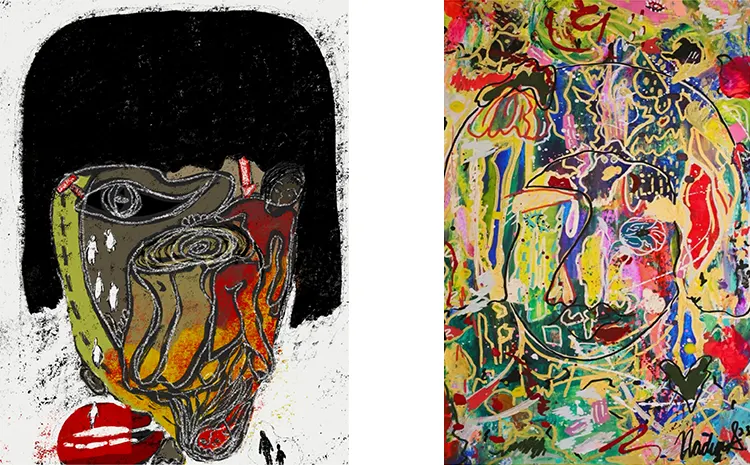
Nadia Aldea: The Meaning Behind ‘Hope’
Among Aldea’s body of work, one piece holds particular significance—Hope, Self Portrait p2 from her Self Portrait Series. The painting is not only a personal favorite but also a deeply symbolic creation. The title, Hope, is a direct translation of her full Russian name, Надежда, making it an embodiment of both her identity and her resilience. This work serves as a visual affirmation of self-worth, a reminder of her artistic and personal evolution.
Hope emerged at a pivotal moment when Aldea was questioning her place in the art world and the validity of calling herself an artist. It followed the creation of New Beginnings, Self Portrait p1, a darker, more somber piece that acted as an emotional release. Through this initial self-portrait, she confronted internalized doubts and fears, breaking through creative barriers that had previously held her back. The transition from New Beginnings to Hope marked a significant shift—not just in her artistic expression, but in her self-perception.
Whenever she walks past Hope, she is reminded of the strength within her. The piece stands as a testament to her journey—one of transformation, self-discovery, and acceptance. It captures the essence of what art means to her: a process of healing, a declaration of existence, and a refusal to be defined by the past. Through this work and others, Aldea continues to explore the depths of her identity, offering a visual narrative that invites viewers to reflect on their own emotions, struggles, and, ultimately, their own hopes.
